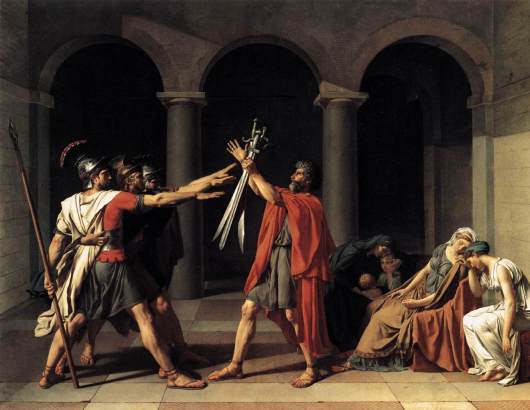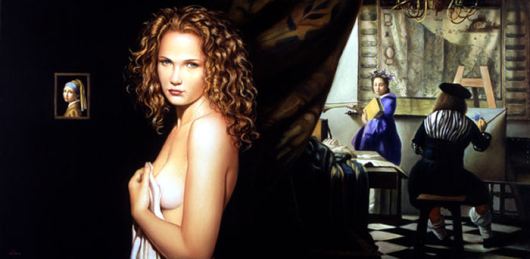
I have just finished my second novel, The Seducer, and had to choose a cover for it. I selected Edson Campos’ postromantic painting, Timeless(pictured above). Indeed, there’s a trace of timeless, romantic longing in this picture, rendered all the more moving by the ruins which surround the pensive woman dressed in blue. This fits perfectly with the mood and theme of my novel.
The Seducer tells a tale of dangerous, forbidden love and the devastation caused by psychopathic seduction. I wanted the cover artwork to capture the dreamy mood of longing and pain of the heroine. I also wanted a picture that was, in some ways, timeless and could take readers back to the tradition of nineteenth century fiction–particularly Tolstoy’s classic, Anna Karenina. You can preview my new novel, The Seducer, on the following links:
Please find below a more detailed description of The Seducer:
My native country, Romania, is best known for a fictional character, Dracula, which is only loosely based on a historical fact: the infamous legend of Vlad Tepes. Novels that draw upon this legend—ranging from Anne Rice’s genre fiction, to the popular Twilight series, to Elizabeth Kostova’s erudite The Historian–continue to be best sellers. Yet, ultimately, no matter how much they may thrill us, the “undead” vampires we encounter in novels are harmless fictional characters that play upon our fascination with evil. However, real-life vampires, or individuals who relish destroying the lives of others, do exist. We see them constantly featured in the news and, if we don’t know how to recognize them, sometimes we even welcome them into our lives.
What do O. J. Simpson, Scott Peterson, Neil Entwistle and the timeless seducers of literature epitomized by the figures of Don Juan and Casanova have in common? They are charming, charismatic, glib and seductive men who also embody some of the most dangerous human qualities: a breathtaking callousness, shallowness of emotion and the fundamental incapacity to love. To such men, other people, including their own family members, friends and lovers, are mere objects or pawns to be used for their own gratification and sometimes quite literally discarded when no longer useful and exciting. In other words, these men are psychopaths.
My novel, The Seducer, shows both the hypnotic appeal and the deadly danger of psychopathic seduction. It traces the downfall of a married woman, Ana, who, feeling alienated from her husband and trapped in a lackluster marriage, has a torrid affair with Michael, a man who initially seems to be caring, passionate and charismatic; her soul mate and her dream come true. Although initially torn between love for her family and her passion for Michael, Ana eventually gives in to her lover’s pressure and asks her husband for divorce. That’s when Michael’s “mask of sanity” unpeels to reveal the monstrously selfish psychopath underneath, transforming what seemed to be the perfect love story into a psychological nightmare. Ana discovers that whatever seemed good about her lover was only a facade intended to attract her, win her trust and foster her dependency. His love was nothing more than lust for power, fueled by an incurable sex addiction. His declarations of love were nothing but a fraud; a string of empty phrases borrowed from the genuine feelings of others. Fidelity turned out to be a one-way street, as Michael secretly prowled around for innumerable other sexual conquests.
To her dismay, Ana finds that building a romantic relationship with a psychopathic partner is like building a house on a foundation of quicksand. Everything shifts and sinks in a relatively short period of time. Seemingly caring, and often flattering, attention gradually turns into jealousy, domination and control. Enjoying time together becomes isolation from others. Romantic gifts are replaced with requests, then with demands. Apparent selflessness and other-regarding gestures turn into the most brutal selfishness one can possibly imagine. Confidential exchanges and apparent honesty turn out to be filled with lies about everything: the past, the present, as well as the invariably hollow promises for the future. The niceness that initially seemed to be a part of the seducer’s character is exposed as strategic and manipulative, conditional upon acts of submission to his will. Tenderness diminishes and is eventually displaced by perversion that hints at an underlying, and menacing, sadism. Mutuality, equality and respect—everything she thought the relationship was founded upon—become gradually replaced with hierarchies and double standards in his favor. As the relationship with the psychopath unfolds, Dr. Jekyll morphs into Mr. Hyde.
The Seducer relies upon the insights of modern psychology and sensational media stories to demystify the theme of seduction we find in classic literary fiction. In its plot and structure, my novel deliberately echoes elements of the nineteenth-century classic, Anna Karenina. In its style and content, it fits in with contemporary mainstream psychological fiction such as Anna Quindlen’s Black and Blue and Wally Lamb’s I know this much is true. As much a cautionary tale as a story about the value of real caring, forgiveness and redemption, The Seducer shows that true love can be found in our ordinary lives and relationships rather than in flimsy fantasies masquerading as great passions.
Claudia Moscovici, postromanticism.com

















